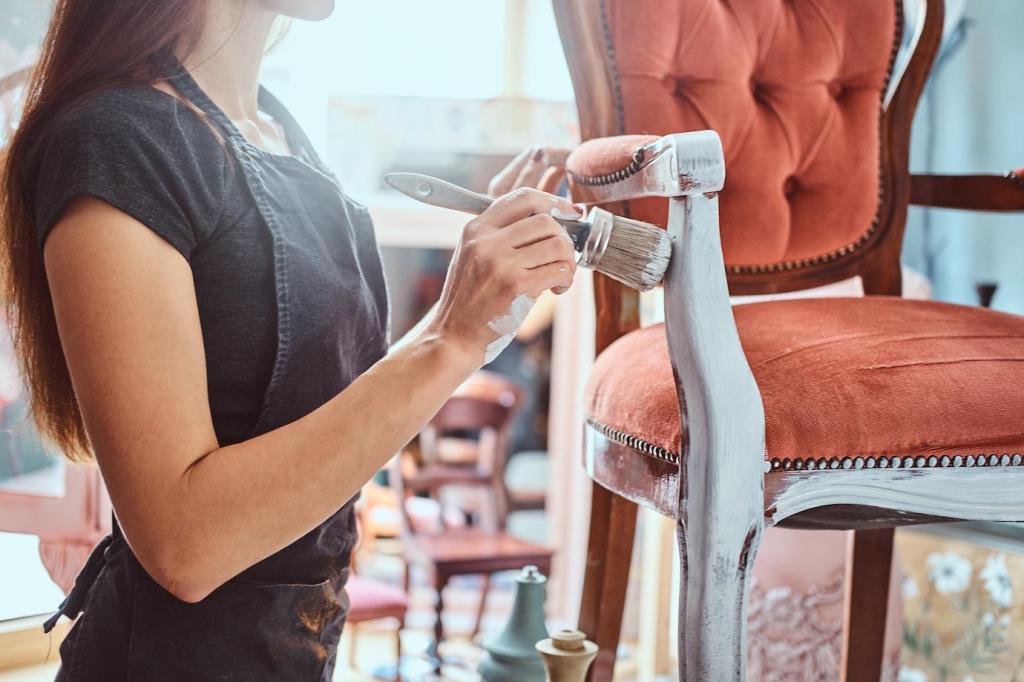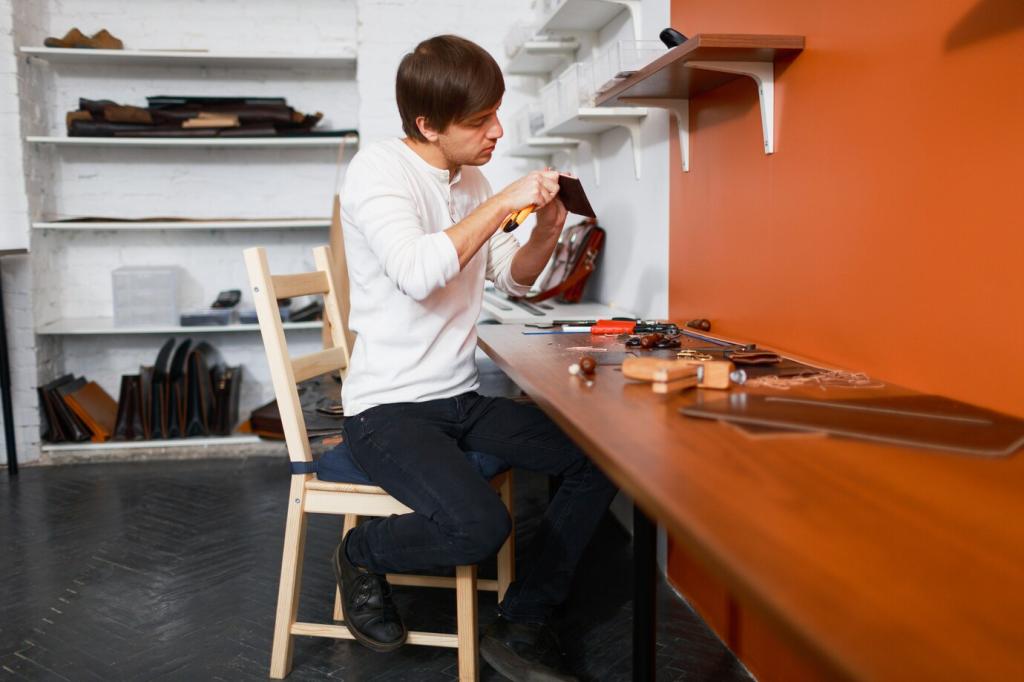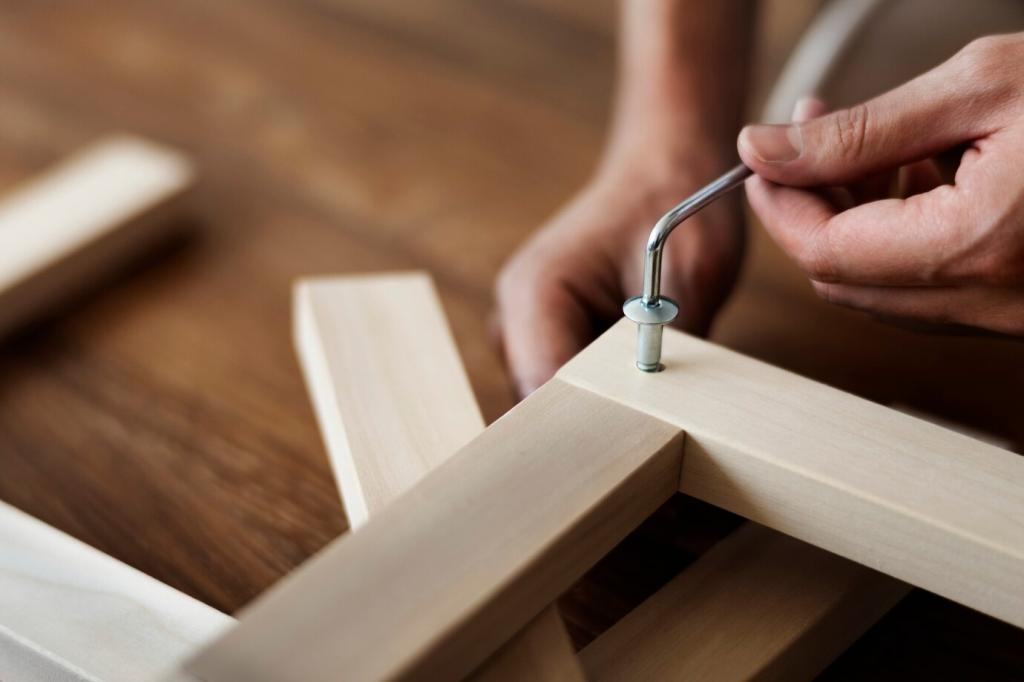Make Your Upholstery Last: Practical Care That Feels Easy
Chosen theme: Tips for Maintaining Upholstered Furniture. After my terrier claimed the sofa and a cappuccino tried to, too, I learned that calm habits beat panic every time. Explore simple routines, tiny tools, and smart timing to keep fabric comfy, colors bright, and stories stain-free. Share your own sofa saga and subscribe for fresh, real-world tips.

Know Your Fabrics and Codes
Understanding Upholstery Cleaning Codes
Locate the cleaning code on the manufacturer tag or under a cushion: W (water), S (solvent), WS (either), X (vacuum only). Always test in a hidden spot before using any cleaner. A quick photo of your tag can be a lifesaver later—snap it, save it, and share your fabric code in the comments.
Natural vs. Synthetic Fabrics
Cotton and linen breathe beautifully but can wrinkle and absorb spills faster, demanding gentle, prompt attention. Microfiber and polyester blends resist staining and are easier to spot-clean, though they may pill with heavy use. Keep a lint shaver handy for fuzz, and tell us which fabric your sofa wears so we can tailor future tips.
Inside the Cushions: Fillings and Support
Down-and-feather mixes feel cloud-soft but need frequent fluffing to stay lofty. Foam cores vary in density and resilience; higher numbers usually mean better support and longer life. Many cushions combine foam wrapped in fiber for structure and comfort. Check yours, set a rotation habit, and comment if you’ve noticed sagging so we can help troubleshoot.
Daily Care, Minimal Effort
Vacuuming Like a Pro
Use a soft upholstery brush and low suction to lift grit that grinds fibers thin. Slide the crevice tool along seams and under cushions where dust collects. Weekly passes keep colors brighter and allergies calmer. If you use a HEPA vacuum, tell us which model you love so other readers can benefit.
Rotate, Flip, and Fluff
Rotate seat and back cushions every one to two weeks to spread wear evenly. If they’re reversible, flip them, too. Give each cushion a quick edge-to-edge fluff to redistribute filling. I rescued a lopsided loveseat with this simple ritual—share your rotation schedule, or ask for a reminder template you can print.
Sunlight and Heat Protection
Direct sun can fade arms and seat tops quietly but quickly. Use sheer curtains, UV film, or rotate the furniture a quarter turn seasonally. Keep at least two feet between upholstery and radiators or vents to prevent drying and fabric stress. Tried this already? Post a before-and-after of any fade line success.
Spill and Stain First Aid
Reach for a clean, white cloth and gently blot from the spill’s edge inward to prevent spreading. Rubbing drives pigment deeper and can roughen fibers. I once watched a coffee ring vanish simply by patient blotting and fresh cloths. What’s your fastest spill story? Share it, and we’ll build a reader-tested first aid kit.



Deep Cleaning, Done Right
For many W and WS fabrics, low-moisture steam lifts grime effectively. Pre-vacuum, pre-test, and avoid soaking cushions. Work in small sections with fans running for quick drying. Not all fabrics love heat, so confirm your code first. Tried a rental machine or hired help? Share drying times and results to help others plan.
Deep Cleaning, Done Right
Use a dry cleaning solvent with windows open and no flames nearby. Apply to a white cloth, dab gently, and rotate to clean sections frequently. Tackle small areas to prevent rings, and allow full ventilation while drying. If you’ve found a brand that works reliably, drop a recommendation for the community.
Deep Cleaning, Done Right
Disinfecting porous fabric is tricky; many disinfectants can discolor or stiffen fibers. Prioritize thorough cleaning, fast drying, and removable-cover laundering when possible. Choose fabric-safe products and follow dwell times carefully. When in doubt, consult the maker’s guidance. Share what worked for you so others can balance hygiene and fabric safety.
Fabric Protectors: What They Do
Modern protectors help repel water and light oils, buying you precious time to blot. Always test for color change, apply evenly with good ventilation, and reapply as the manufacturer suggests. They are not armor, but they reduce panic. Tell us if you notice easier cleanup after treatment—we love real-world results.
Smart Use of Throws and Slipcovers
Place washable throws across high-traffic zones like arms and seat fronts, especially for pets and weeknight dinners. Rotate seasonally to wash and refresh texture. Tailored slipcovers can transform and protect a whole piece. Post a photo of your favorite protective styling—practical doesn’t have to be boring, and we’ll feature creative ideas.
Placement and Use Habits
Keep snack trays handy, use coasters on nearby tables, and teach pets their designated blanket spot. Shoes off on deep seats helps, too. Tiny habits extend fabric life dramatically. What small rule changed your living room the most? Share one tip, and challenge a friend to adopt it this week.
Catch frays early with a curved needle and ladder stitch, or apply fabric glue to a backing patch tucked underneath. Work slowly and match thread color closely. I saved a family armchair during a movie night like this—no one even noticed. Share your mending victories or ask for stitch diagrams.
Repair and Refresh
Open zippers and inspect the core. Add polyfill for loft or replace tired foam with high-resilience cushions wrapped in Dacron for smooth edges. Measure carefully so covers fit neatly. The difference feels like new furniture. If you’ve tried re-stuffing, tell us which foam density felt best over time.
